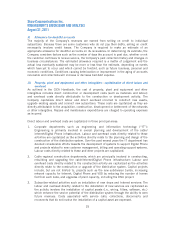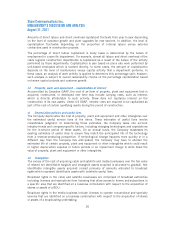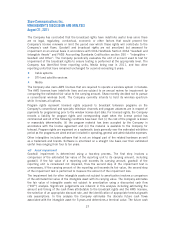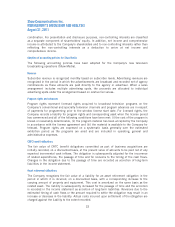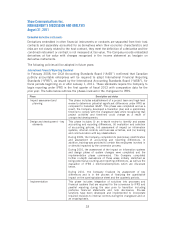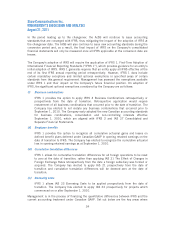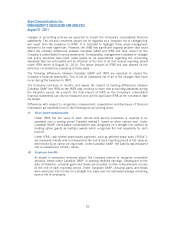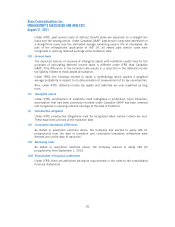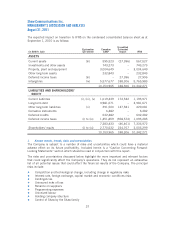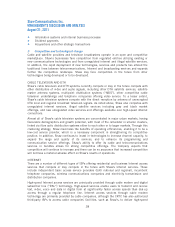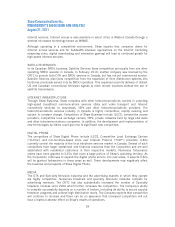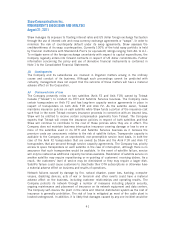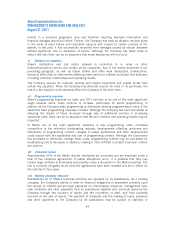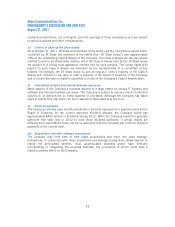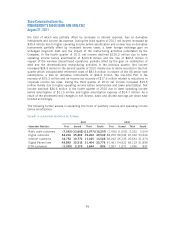Shaw 2011 Annual Report Download - page 39
Download and view the complete annual report
Please find page 39 of the 2011 Shaw annual report below. You can navigate through the pages in the report by either clicking on the pages listed below, or by using the keyword search tool below to find specific information within the annual report.Shaw Communications Inc.
MANAGEMENT’S DISCUSSION AND ANALYSIS
August 31, 2011
changes in accounting policies are expected to impact the Company’s consolidated financial
statements. The list and comments should not be regarded as a complete list of changes that
will result from the transition to IFRS. It is intended to highlight those areas management
believes to be most significant. However, the IASB has significant ongoing projects that could
affect the ultimate differences between Canadian GAAP and IFRS and their impact on the
Company’s consolidated financial statements. Consequently, management’s analysis of changes
and policy decisions have been made based on its expectations regarding the accounting
standards that are anticipated will be effective at the end of its first annual reporting period
under IFRS which is August 31, 2012. The future impacts of IFRS will also depend on the
particular circumstances prevailing in those years.
The following differences between Canadian GAAP and IFRS are expected to impact the
Company’s financial statements. This is not an exhaustive list of all of the changes that could
occur during the transition to IFRS.
The Company continues to monitor and assess the impact of evolving differences between
Canadian GAAP and IFRS as the IASB may continue to issue new accounting standards during
the transition period. As a result, the final impact of IFRS on the Company’s consolidated
financial statements can only be measured once all the applicable IFRS at the conversion date
are known.
Differences with respect to recognition, measurement, presentation and disclosure of financial
information are expected to be in the following key accounting areas:
(i) Share-based compensation
Under IFRS, the fair value of stock options with service conditions is required to be
expensed over a vesting period (“graded vesting”), based on when options vest. Under
Canadian GAAP, stock-based compensation was recognized on a straight-line method by
treating option grants as multiple awards which recognizes the cost separately for each
tranche.
Under IFRS, cash settled share-based payments, such as deferred share units (“DSUs”),
are measured initially and re-measured at the end of each reporting period at fair value as
determined by an option pricing model. Under Canadian GAAP, the liability was measured
and re-measured at intrinsic values.
(ii) Employee benefits
As stated in exemption elections above, the Company elected to recognize cumulative
actuarial losses under Canadian GAAP in opening retained earnings. Subsequent to the
date of transition, actuarial gains and losses are recorded in other comprehensive income
at the end of each reporting period. Under Canadian GAAP, actuarial gains and losses
were amortized into income on a straight-line basis over the estimated average remaining
service life of employees.
35


